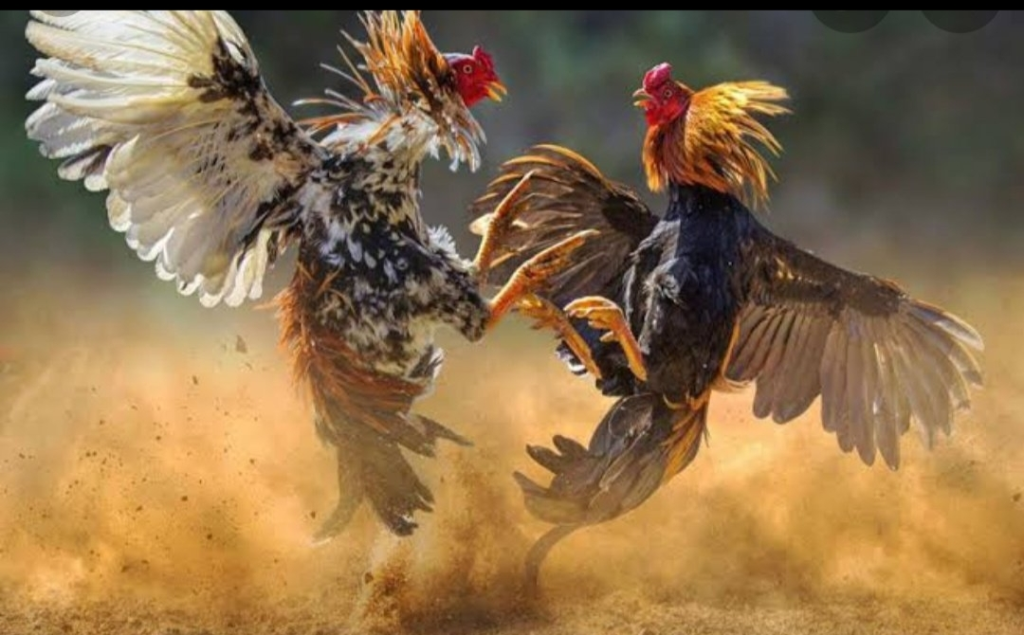Exploring the Dark Psychology Behind West Godavari’s Cockfighting Culture During Sankranti: Where Tradition Meets Turmoil”
In West Godavari, the annual cockfighting event, known as “Kodi Pandelu,” unfolds during the vibrant Sankranti festival. This tradition, deeply rooted in the local culture, is not merely an exhilarating spectacle; it embodies complex psychological elements tied to social status, masculinity, and a dark spectrum of human instincts that raise challenging moral questions.
At the heart of the cockfight lies a fierce sense of pride and prestige. Participation—whether as an owner, trainer, or bettor—signifies one’s position within the community, acting as a poignant testament to masculinity and social standing. Each successful ownership or victory in the arena resonates with personal triumph and economic gain, cementing an individual’s honor in the eyes of peers. Victory is not only celebrated; it cultivates camaraderie among spectators, who appreciate the raw aggression displayed by these fighting birds. As the roosters clash, the arena pulsates with energy, echoing with cries of excitement and anticipation that amplify the humans’ primal instincts.

The cockfighting spectacle is a chilling reflection of aggressive human behavior. As roosters are often equipped with sharp blades on their legs, the fights devolve into serious blood sports, showcasing tragic violence that echoes the conflicts of human nature. The spectators are drawn to the primal thrill of witnessing aggression, mimicking ancestral pastimes where strength and survival defined societal hierarchies. The ritualistic nature of these fights produces a strange amalgamation of community bonding and moral decay, as people from diverse social backgrounds converge to partake in this bloodbath, enjoying a shared passion that temporarily dissolves social barriers.
However, a dark undercurrent permeates this fervent community celebration. Despite its cultural significance, the practice has drawn scrutiny for its brutality and the suffering inflicted on the animals involved. Activists highlight the inherent cruelty of cockfighting, which disregards the physical and psychological toll it takes on the roosters. Yet, the tradition continues unabated, often overshadowed by the thrill of competition and gambling, where immense financial stakes—over ₹500 crore during the festival—draw participants from across regions and abroad to bet on the outcomes.

The social landscape during Sankranti becomes a carnival, where anticipation fuels excitement, distracting from the underlying reality of violence. Cockfighting becomes a spectacle tied to local pride and identity, with the economic dynamics interwoven within this tradition creating an environment where ethical concerns are routinely dismissed. The participants celebrate not only the fight but their successes and the corresponding status that comes from owning successful fighting birds. The visceral connection between the spectators and the fights fuels a cycle of violence that masquerades as cultural heritage.
Indeed, these events serve as an unsettling illustration of the paradoxes within human morality, showcasing a duality where compassion and cruelty coexist. As community members rally around the fights, they tend to prioritize tradition over ethics, glorifying aggression while suppressing discomfort regarding the suffering of animals. This complex relationship—where celebration coexists with brutality—invites profound scrutiny about societal values and the legacy of practices that are both culturally significant and ethically contentious.

As the fervor of the fights reaches its peak, so too do the stakes—inseparability from violence and camaraderie becomes alarmingly evident. Each encounter in the arena not only symbolizes individual and collective identity but also highlights humanity’s troubling fascination with domination. In this environment, the roosters are stripped of their lives and identities, reduced to mere tokens in a high-stakes wager that elevates human spectators while diminishing the essence of life itself.
The psychological ramifications of this spectacle affirm uncomfortable truths about human instincts. Spectators’ ungoverned desire for competition and validation conflicts starkly with modern views on compassion for living beings, resulting in a tension that begs for resolution. The excitement derived from bloodshed and the accompanying hierarchical validation speak to society’s darker inclinations, raising fundamental questions about our roles within communities and our treatment of other creatures.
As the festival concludes, the participants leave clutching tales of glory that are inextricably linked with violence and suffering. The celebration of aggression weaves itself deeper into the fabric of social identity, where cockfighting becomes a lens through which to examine power dynamics and societal structures. The echoes of the fights linger long after the dust settles, prompting a collective introspection about tradition, ethics, and the price of pride.

Through this intricate interplay of human instincts, social hierarchies, and cultural traditions, the cockfights of West Godavari stand as a glaring testament to our primal nature and the ethical dilemmas entwined within it. This dark dance, marked by blood and raucous celebrations, leaves behind a haunting reminder of the unresolved conflicts that reside within us, beckoning a deeper understanding of our commitment to cultural practices amidst an evolving discourse on morality and compassion. The legacy of these events underscores a societal imbalance, where the thirst for recognition and dominance generally overshadows the ethical obligation to treat all living beings with dignity and respect, urging a crucial reflection on the very nature of human celebrations intertwined with suffering.

